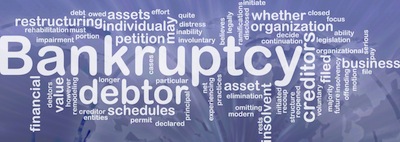Under Chapter 13, consumers keep all of their property, both exempt and non-exempt, as long as they resume making the regular payments on secured debt and keep current under the bankruptcy repayment plan. A repayment plan can last for up to five years. After finishing the plan's payments, most of the consumer's unsecured debts are discharged.
Chapter 7 is designed for people who are having financial difficulties and are not able to repay their debts. Consumers can usually qualify for Chapter 7 if their average gross monthly income for the last 6 months is below the state’s Median Income, or their gross income less certain expenses is below the state’s Median Income, or they can show special circumstances that would allow them to qualify for Chapter 7. The filing fee paid to the bankruptcy court for filing Chapter 7 is $335.
Under Chapter 7, consumers can usually exempt, or keep, most or all of their assets under California law, or, if they have not lived in California for the past 2 years, under the exemption laws of the state that applies to their case. Most retirement accounts and pensions are also exempt. Secured property, normally the consumer's car and house, may not have any net equity, in which case the consumer can keep it as well.
Once the Chapter 7 case is over, the consumer receives a Discharge. The discharge prevents creditors from taking any steps to try to collect their claim against the consumer personally. Creditors cannot call, write, sue, or take any steps that could be considered an attempt to collect the debt. If a consumer wants to keep property that has a lien on it, the consumer must keep payments current, and may be required to reaffirm the debt. Some debts cannot be discharged. Typical examples are child support, alimony, and other domestic support obligations, some taxes, student loans, criminal restitution, and debts for death or personal injury caused by operating vehicles while intoxicated with alcohol or drugs.
Originally posted August 2011; updated June 2014
Please check out MORE BLOGS about specific bankruptcy topics, but keep in mind that, unless updated here, dollar figures for fees and thresholds can change on a yearly basis. Please call for current, accurate information.
Bankruptcy Blogs: Bankruptcy 101
The Bankruptcy Code is divided into chapters. The chapters that usually apply to consumers are Chapter 7,
where most or all of your debt is wiped out, and Chapter 13, which involves a repayment plan.
In most cases, once you file your bankruptcy, the Automatic Stay immediately goes into effect and stops most lawsuits, repossessions, foreclosures, garnishments, attachments, utility shut-offs, and debt collection harassment. Chapter 13 is a valuable tool that lets consumers catch up overdue mortgage or car payments, taxes and domestic support obligations. It also applies where consumers have the ability to repay some or all of their debts over time.
A consumer must have less than $383,175.00 in unsecured debt (such as credit cards and doctors bills) and less than $1,149,525.00 in secured debt (such as mortgages and car loans) to qualify for Chapter 13. The filing fee for
Chapter 13 is $310.
David Wiese Bankruptcy
1287 Elfin Forest Road East, San Marcos CA 92078
760-798-4045
760-944-0841
